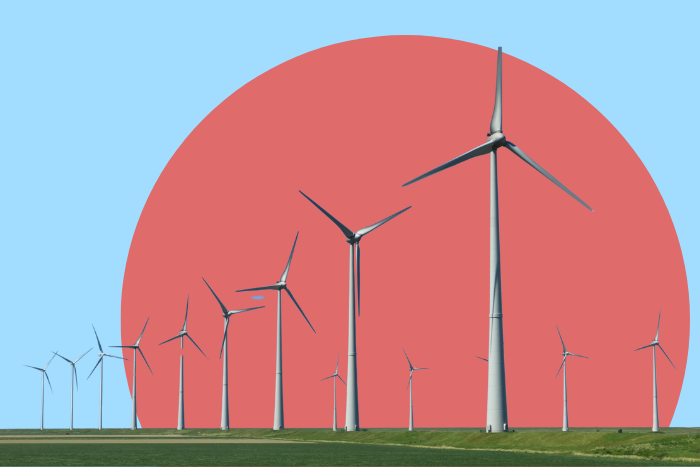While China is expected to install over 50% of global wind additions between 2024 and 2030, India has the second-biggest difference (after the US) between projected installations and what is required to fulfil the 2030 target, the report says
According to a new report, the world’s wind capacity will double by 2030, primarily due to China’s predicted overdelivery and the rest of the globe’s projected underdelivery.
In 2030, the global wind capacity is projected to reach around 2,100 GW. This value comes close to the global sum of country-wise targets by 2030. However, this is primarily achievable due to large wind additions forecasted in China, the report found.
Once China is excluded from global calculations, the situation looks less positive, the report said, with forecasts for the rest of the world falling far short of 2030 national targets and a global tripling.
Although China only accounts for 37% of global wind targets, it is expected to install over 50% of global wind additions between 2024 and 2030, the report said. China is overachieving on its target and is forecast to almost triple wind capacity from 2022 to 2030.
China has seen a large boom in wind since 2020. According to the report, in 2023, 66% of global onshore additions and 64% of global offshore additions were in China. Whilst much is written on China’s dominance in global solar installations, it has the same market share for wind.
Global wind capacity falling short of the tripling goal by 2030
The report also stated that national targets by governments around the world add up to just over a doubling of the global wind capacity by 2030, but fall short of tripling.
At the UN’s COP28 climate change conference in December 2023, nations decided to increase the world’s renewable energy capacity by 2030. The total amount of the 2030 national wind targets is 2,157 GW, which is a 2.4-fold increase over the 2022 capacity of 901 GW. The report stated that 585 GW more capacity would be needed to triple worldwide wind production.
The report examined national wind targets for 2030 in 70 nations plus the EU, which accounts for 99% of the world’s current wind capacity.
State of wind energy in India
According to the report, India is the fourth-largest wind market in the world and has the second-biggest difference (after the US) between projected installations and what is required to fulfil the 2030 target. India’s overall renewables capacity target is for a tripling from 163 GW in 2022 to 509 GW by 2030. For wind, this means a 2.6x increase from 42 GW in 2022 to 110 GW in 2030, the report said.
In order to reach this level, the report added, 9.3 GW of wind power must be added annually between 2024 and 2030. Although annual wind installations in India have risen over the past three years and were 51% higher in 2023 than in 2022, the current build rate of 2.8 GW in 2023 is well below what is needed.
While gaps are biggest in large wind markets such as the US, India, and the EU, it is these markets that are adding at least half of the wind needed each year to meet their 2030 target.
India has domestic wind manufacturing capability, and increased confidence in supply chains, along with positive policy and regulatory momentum could help lower the gap between forecast additions and what is needed to meet the 2030 target
Rest of the world
“Governments are lacking ambition on wind, and especially onshore wind,” said Dr Katye Altieri, electricity analyst at Ember. “Amidst the hype of solar, wind is not getting enough attention, even though it provides cheap electricity and complements solar.”
The report said that the US does not have an explicit target, but modelling suggests that wind will increase by 2.6x from 142 GW in 2022 to 369 GW in 2030. Achieving this requires building 32 GW of wind annually from 2024 to 2030. However, the current build-rate is very low— just 6.4 GW of wind was added in 2023.
However, not all countries are under-achieving on their wind targets, the report said. Achieving 2030 targets requires Brazil to build 0.3 GW of wind annually from 2024 to 2030. In 2023, it set a record by adding 5 GW of wind and per forecasts, it will continue to add an average of 2.4 GW of wind per year till 2030.
Türkiye’s goal is to generate 12% of electricity from wind in 2030, which has already almost been achieved. However, this is in part because its target lacks ambition. The country is capable of setting a higher target and its wind potential is estimated to be well above its current ambitions.
More than 90% of the expansion in renewable energy capacity for a worldwide tripling is anticipated to come from solar and wind power. In order to enhance the efficiency of renewable energy sources by three times, the world must prioritise the rapid development of wind power. Rapid and large-scale wind growth can be achieved with the correct mix of governmental, regulatory, and financial support, as evidenced by the rapidly expanding wind industry in a few select nations and the upward revisions of predictions in important regions.
About The Author
You may also like
Non-Fossil Fuels Generates One-Third of India’s Electricity in 2025
India on track to achieve 2030 clean energy target
Investing in solar, storage can save Thailand close to $2 billion: Report
India to add 45GW solar capacity in FY 2026: Study
Government Proposes for ALMM Expansion for Solar Backward Integration

